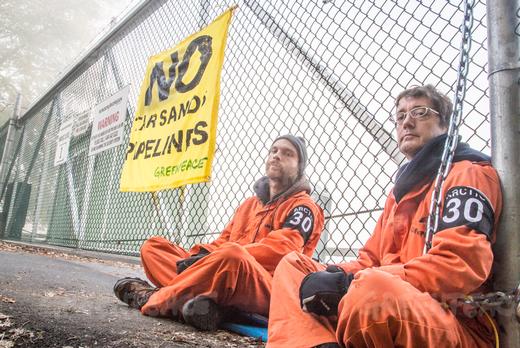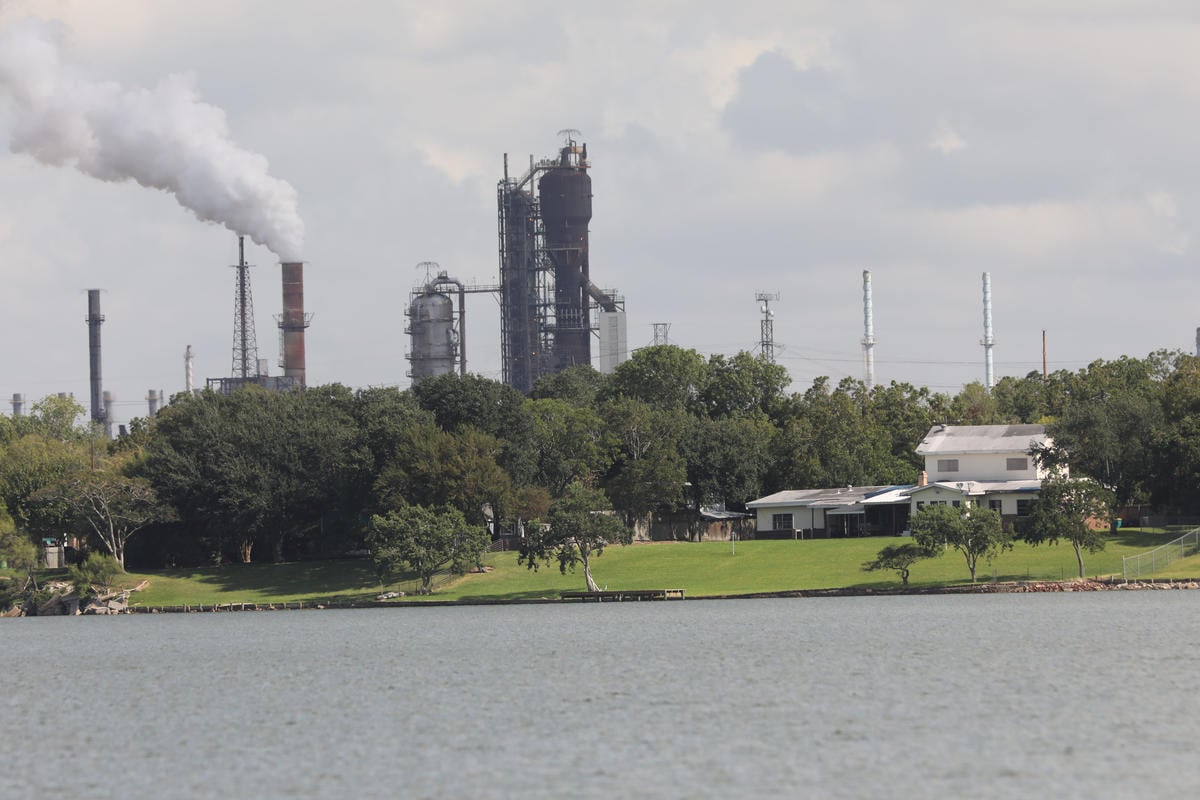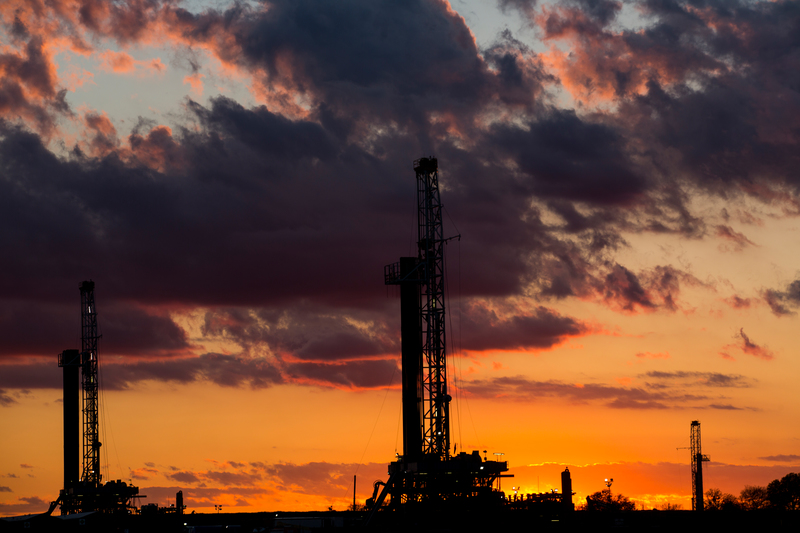At the centre of the post-election storm and fury over pipelines is an eerie silence, as we collectively ignore the fact that no oil company actually wants to build a new pipeline. To break through that silence, we need to ask what the oil lobby does want and what kind of a test this sets for newly-elected Prime Minister Mark Carney.
Alberta Premier Danielle Smith is threatening a referendum on leaving Canada unless she is guaranteed new pipelines, but who would build it given the utter lack of a business case?

Blog author Keith Stewart and a Greenpeace activist chained to the front gate of the Transmountain pipeline terminus in Metro Vancouver in 2013. © Zack Embree / Greenpeace.
When Trump launched his bizarre tariff-and-annexation assault on Canada, there was a rush to find ways to reduce our reliance on the United States. Pipelines were one of the ideas lying around, but when journalists initially asked oil companies if they’d build them they said no.
Enbridge had no interest in reviving the Northern Gateway pipeline. TC Energy didn’t want to build Keystone XL or Energy East. Kinder Morgan abandoned Trans Mountain in 2018 so the Trudeau government bought it and put $34 billion (over six times the initial cost estimate) into building it. Yet even after Trump’s tariffs went into effect, it still isn’t full.
But rather than let the (Trump-initiated) crisis go to waste, the oil lobby pivoted to say that they couldn’t even think about building pipelines until the federal government declares a state of emergency (like Trump did) to bypass those pesky environmental protections (like Trump is doing).
The demand that Mark Carney magically make a pipeline appear is a test he can’t possibly pass, especially when this Trump-style deregulatory push is the oil lobby’s real goal. The pre-election policy demands released by the Canadian Association of Petroleum Producers (CAPP) and the post-election letter from 38 oil industry CEOs call on the federal government to get out of the business of regulating and pricing greenhouse gas emissions entirely and leave it to the provinces.
This would utterly eviscerate Canada’s climate plan. Provinces often have their own emissions reduction and pricing programs, but currently these are required to meet a minimum standard set by the federal government. Take away the federal backstop and the petro-provinces will race to roll back their own policies.
The Conservative Party promised to grant the oil lobby’s wish list in the last election. They lost.
Now, backed by the Alberta Premier, the oil lobby is demanding that Prime Minister Carney implement the Conservative’s losing oil policy platform.
This would be a mistake. The reality is that even if the taxpayer footed the entire bill (again), there’s no way to get a pipeline built until long after Trump is no longer President. By then, oil demand is expected to be dropping fast as the rest of the world (outside of Russia and the U.S.) follow the lead of Europe and China in accelerating the transition to renewable energy in order to reduce their exposure to oil and gas supplies being used as a weapon.
With global oil demand set to go into long-term decline, conceding in a phony war over pipelines won’t solve Western alienation.
Instead, Carney’s energy corridor promise should focus on building the east-west green grid that links new solar and wind farms with existing hydro dams to power the heat pumps in our homes and the electric vehicles in our driveways and transit systems. This green energy corridor should be focused on benefiting regular people. It can create good unionized jobs in renewable energy along with the green steel, critical mineral and manufacturing facilities they require, all while meeting the highest environmental and social standards (so we don’t replicate the bad things about the fossil fuel energy system as we create one built around renewable energy).



